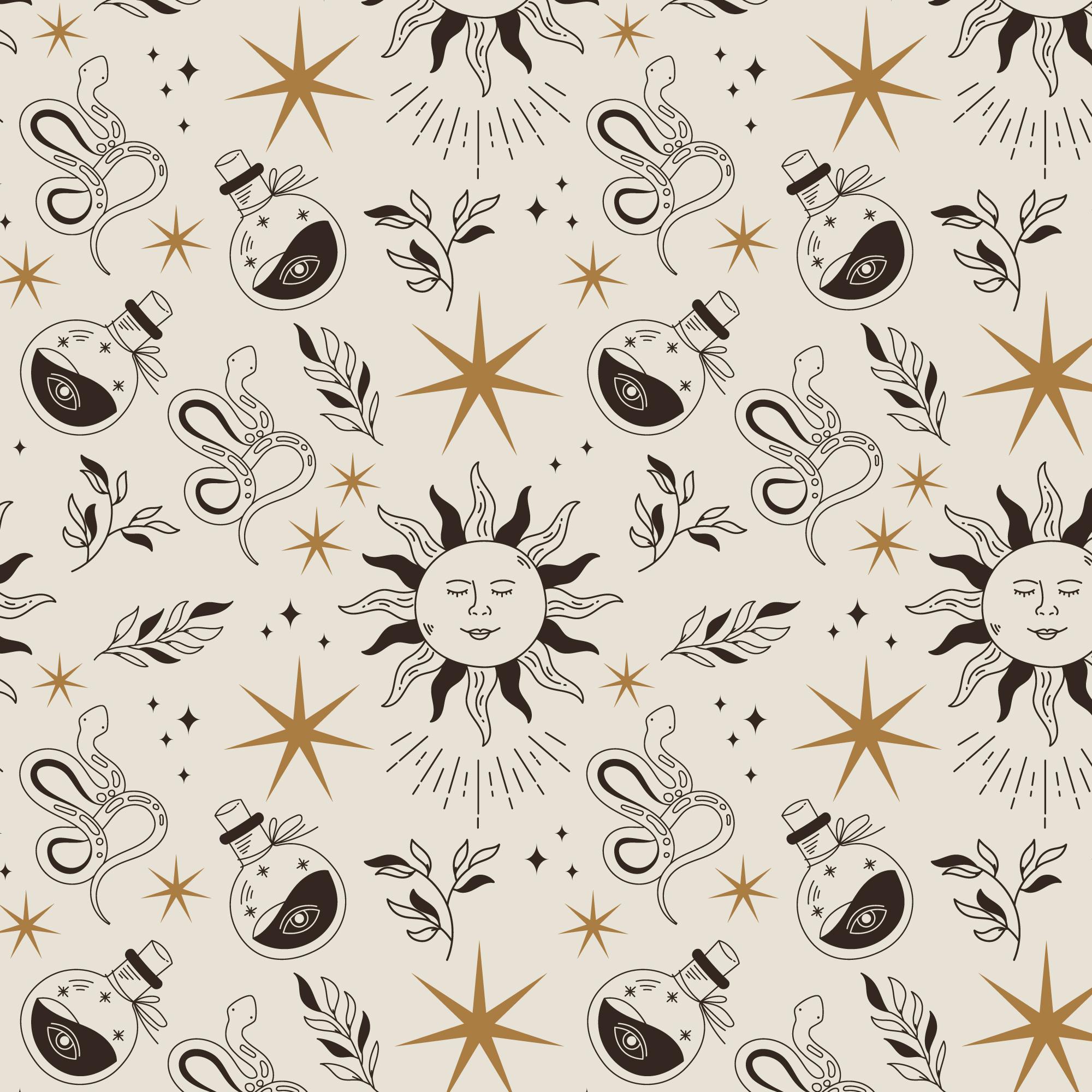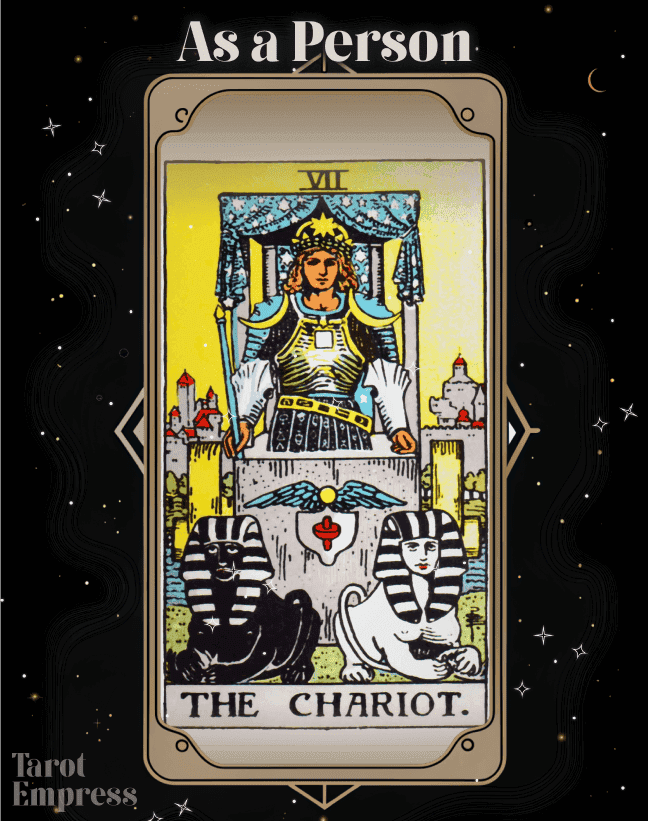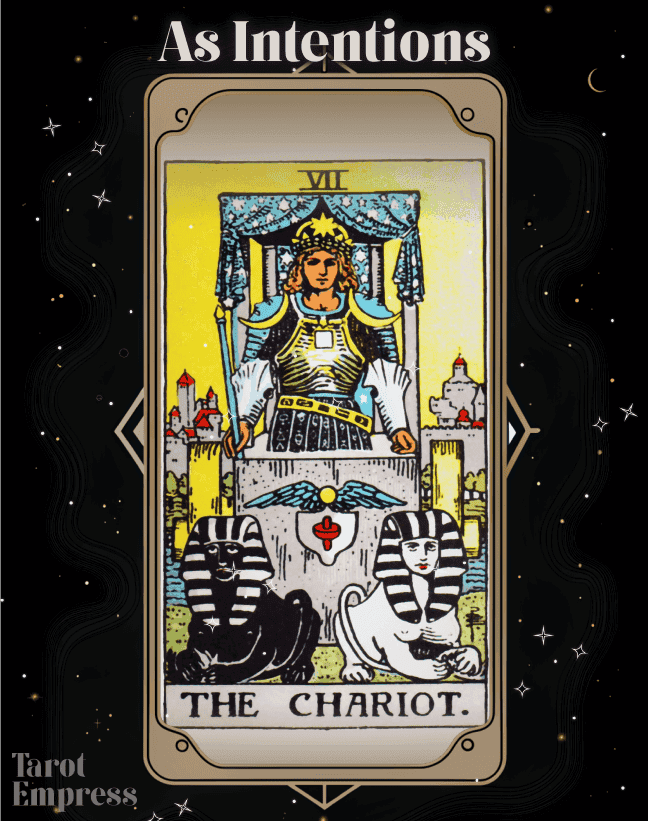
The Chariot: Unveiling Tarot Meanings

The Chariot Future: Upright & Reversed Meaning of Strategic Discipline and Planning
The allure of The Chariot lies in its dual potential: in its upright stance, it promises achievement through discipline, while in a reversed state, it suggests caution against hastiness that might lead to setbacks. Through this imagery, The Chariot offers profound insights into future possibilities, highlighting a path of personal mastery and conscious decision-making in life's endeavors. As we gaze into the future, The Chariot serves as both vehicle and guide, helping us to better understand the depths of human will and the mysteries that lie beyond.

The Chariot as a Person: Upright & Reversed Meaning of Unwavering Determination
The Chariot tarot card stands out as a symbol of power, motivation, and the quest for achievement. Viewed as a person, the Chariot invites us to consider how traits such as determination and ambition shape our journeys. Whether the card is interpreted upright or reversed, it opens our minds to the intricacies of behavior and character, providing guidance through life's various challenges, from relationships to career paths and personal development.

The Chariot as Advice: Gaining Control and Determination
The Chariot stands as a powerful symbol of momentum and authority. When The Chariot is drawn as advice in a reading, it signifies a crucial juncture where determination and resolve come together to guide one's journey in spheres such as love, career, or spiritual growth.

The Chariot as Intentions: Upright & Reversed Interpretations - Journey of Willpower
The Chariot, a card that often speaks of determination, control, and triumph, presents an intriguing perspective on how intentions are manifested and realized. It brings to light the persistent and dynamic aspects of human will, pushing through obstacles and adversities. The article will analyze The Chariot as intentions, examining both its upright and reversed states, and considering how it influences our decisions, behaviors, and outcomes.